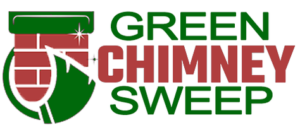Chimneys are an integral part of many homes, providing warmth, comfort, and an inviting atmosphere. However, to ensure that your fireplace operates safely and efficiently, regular chimney inspections are crucial. Understanding how often you should schedule an inspection can prevent hazardous situations and costly repairs, ensuring that your chimney remains in optimal condition.
The Importance of Chimney Inspections
A well-maintained chimney is essential for preventing fires, carbon monoxide poisoning, and structural damage. Over time, creosote, soot, and debris accumulate inside the chimney, creating a significant fire hazard. Additionally, weather conditions, structural shifts, and wear and tear can cause deterioration, leading to inefficient operation and potential safety risks. Regular chimney inspections help identify and address these issues early, maintaining the safety and functionality of your chimney.
Factors Influencing the Frequency of Inspections
While the NFPA’s annual recommendation is a general guideline, several factors can influence how often you should schedule a chimney inspection. These factors include the type of fuel you use, the age and condition of your chimney, and your usage patterns.
Type of Fuel:
- Wood-burning Fireplaces: If you burn wood in your fireplace, annual inspections are crucial. Wood fires produce creosote, a highly flammable byproduct that can accumulate in the chimney and ignite if not regularly removed.
- Gas Fireplaces: Gas fireplaces produce less creosote but can still develop issues such as blockages, corrosion, and ventilation problems. Annual inspections are recommended to ensure safe operation.
- Oil or Coal Stoves: These types of stoves also produce a significant amount of soot and residue, necessitating regular inspections and cleanings.
Age and Condition of the Chimney:
- Older chimneys may require more frequent inspections due to wear and tear. Masonry chimneys, in particular, can develop cracks and deterioration over time.
- Newer chimneys may not need as frequent inspections if they are well-maintained, but annual checks are still advisable to catch any early signs of trouble.
Usage Patterns:
- Frequent Use: If you use your fireplace regularly, more frequent inspections may be necessary. Heavy use can accelerate the buildup of creosote and soot.
- Occasional Use: Even if you use your fireplace only occasionally, annual inspections are important. Infrequent use doesn’t eliminate the risk of blockages, animal nests, or other issues.
- Seasonal Use: For those who use their fireplaces seasonally, it’s a good idea to schedule an inspection before the start of the season to ensure everything is in working order.
Signs That Indicate a Need for an Inspection
Beyond the general guidelines, certain signs indicate an immediate need for a chimney inspection. These warning signs should not be ignored, as they can indicate serious problems that require prompt attention.
- Unusual Odors: If you notice strange or strong odors coming from your fireplace, it could indicate creosote buildup, blockages, or moisture problems.
- Smoke Backup: Smoke entering your home instead of venting through the chimney is a clear sign of a blockage or draft problem.
- Soot Buildup: Excessive soot inside the fireplace or around the chimney exterior indicates poor combustion and the need for cleaning and inspection.
- Cracked or Deteriorated Masonry: Visible cracks or crumbling mortar on the exterior of the chimney can indicate structural issues that need to be addressed.
- Damaged Chimney Cap or Flashing: If the chimney cap or flashing is damaged or missing, water can enter the chimney, leading to further damage.
- Animal Nests: Birds, squirrels, and other animals may build nests in the chimney, causing blockages and potential fire hazards.
Levels of Chimney Inspections
Chimney inspections are categorized into three levels, each with varying degrees of thoroughness.
- Level 1 Inspection: This is a basic visual inspection, recommended for chimneys that have been well-maintained and have not experienced any major issues or changes. The inspector will examine the readily accessible parts of the chimney interior and exterior.
- Level 2 Inspection: This more detailed inspection is required if you’ve made changes to your chimney system, such as a new liner or appliance, or if you’ve experienced a chimney fire or severe weather event. It includes a video scan of the internal surfaces to check for hidden damage.
- Level 3 Inspection: The most comprehensive inspection, Level 3 is necessary when serious structural issues are suspected. It may involve some degree of demolition to access concealed areas of the chimney and thoroughly assess the problem.
Preparing for a Chimney Inspection
To ensure a smooth and effective inspection, there are a few steps you can take to prepare:
- Clear the Area: Remove any furniture, decorations, or obstructions around the fireplace to give the inspector easy access.
- Avoid Using the Fireplace: Ensure the fireplace has not been used for at least 24 hours before the inspection to allow it to cool down completely.
- Provide Access: Make sure the inspector has access to all necessary areas, including the roof if needed.
- Gather Documentation: Have any previous inspection reports or records of chimney maintenance available to share with the inspector.
Conclusion
Regular chimney inspections are vital for maintaining the safety and efficiency of your fireplace. By adhering to the NFPA’s guidelines and considering factors such as fuel type, chimney age, and usage patterns, you can determine the appropriate frequency for inspections. Paying attention to warning signs and scheduling timely inspections can prevent hazardous situations and costly repairs.
For expert chimney inspections and maintenance, trust Green Chimney Sweep. Our experienced professionals are dedicated to ensuring your chimney is safe and your home is protected. Schedule your inspection today and enjoy the peace of mind that comes with a well-maintained chimney.
